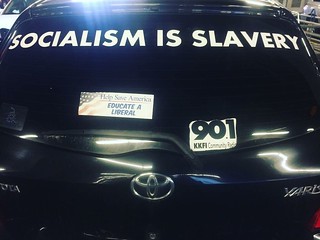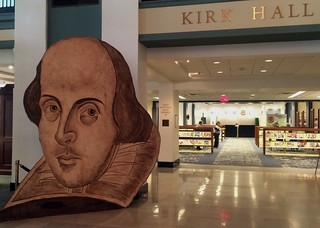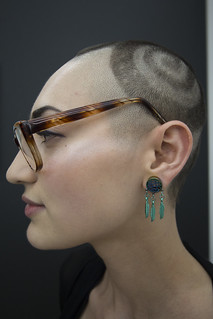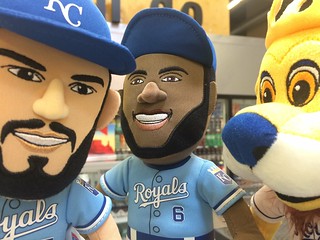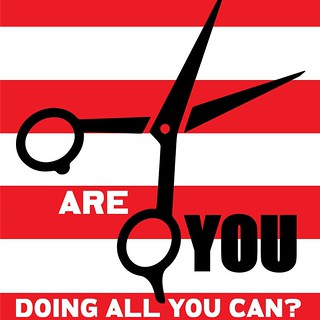A Billboard that Wasn't
Recently I submitted the above mock-up for a pair of art billboards. It may not come as a surprise to some that they were not selected for inclusion. And as much as I would have preferred that they were included, up front, I realized it was a long shot that they might not be seen in a favorable light by a review committee composed, in part, of business interests. Regardless, I felt it was important in a program about art, more specifically one using billboards as an art framing device, that the proposed work should do just that: acknowledge that the medium is a billboard and given that, how can proposed work be framed within the history of outdoor advertising and how can I, as an artist, respond to such constraints in a meaningful way.
Those interested in learning more about the history of outdoor advertising can consult this industry view which contains a keynote speech by the current director, Nancy Hartman, at the Duke Harman Center. Duke also maintains a large library of digital images that are worth a view.
Those interested in learning more about the history of outdoor advertising can consult this industry view which contains a keynote speech by the current director, Nancy Hartman, at the Duke Harman Center. Duke also maintains a large library of digital images that are worth a view.
Large-scale Community History Murals
 |
| Panoramic view of a portion of the Spirit of Argentine mural. |
 | ||
| Panoramic view of a portion of the Spirit of Argentine mural. |
The Argentine mural was produced under the direction of Jesus Ortiz and includes the work of muralists: Alicia Gambino, Jose Faus, Martha Vivanco, Virginia Delgado, Tadeo Franco, and Ardis Peterson.
Even more disappointing is that recent development in the Power and Light District has covered up the second portion of that mural which spanned a block to the east (Walnut to Oak). The mural depicted the history of Kansas City Monarch and Negro League baseball in the city. Although visitors can still sample this rich heritage at the Negro League Hall of Fame a few blocks to the east, it's sad to see this landmark get covered by gentrification.
The Troost Avenue Murals of Alexander Austin
 |
| Alexander Austin mural, The King, 3217 Troost Ave., Kansas City, MO |
In The King, images of Dr. ML King, Jr in both oratory and reflection flank both the left and right sides of the murals. Also featured on the mural is a young Michael Jackson, the King of Pop. The muralist Austin can be seen kneeling in deference the King's legacy.
 |
| Alexander Austin mural, Manheim Grandmothers, St. Vincent de Paul Thrift Store, 3922 Troost Ave., KCMO |
A few blocks south, at the St. Vincent de Paul Thrift Store, lies a mural like none other in the region. It's depicts four grandmothers: Lucille Leaphart, Orisa Kelly-Hogan, Avern Hughes, and Dorothy Hawkins (left to right) of the Manheim Neighborhood. In the center lies an image of St. Vincent de Paul. By placing these women, stalwarts of the neighborhood on each side of de Paul, Austin elevates them to saintly status and gives them their due respect.
 |
| Alexander Austin mural, 31st & Troost, Pergola Park/Osage Trail Station. Color mural on right added later by different muralist. |
Avienda Cesar E. Chavez
If you want to see murals in Kansas City perhaps the first place to visit is Avienda Cesar E. Chavez. Across the street from the Guadelupe Center, a mural dedicated to the avenues namesake, wraps around a staircase. Brightly colored and finely detailed, it beckons one to ascend the steps into Gage Park which lies beyond and find a new world.
But go west, young man. Go West. At the western-most end of the avenue lies a block of murals dedicated to Meso-American cultures. Created in 1985, the murals—despite some fading and chipping—are still rich reminders of these cultures as well as the culture of great community art and mural making that still thrives in Kansas City, Kansas. The murals were created by a group of artists led by Lee Ann Perez, Javier Perez, and Clemente Raya Sr.
But go west, young man. Go West. At the western-most end of the avenue lies a block of murals dedicated to Meso-American cultures. Created in 1985, the murals—despite some fading and chipping—are still rich reminders of these cultures as well as the culture of great community art and mural making that still thrives in Kansas City, Kansas. The murals were created by a group of artists led by Lee Ann Perez, Javier Perez, and Clemente Raya Sr.
 |
| Mayan Warrior, Bonampak, 800 AD |
 |
| The Life of the Mixtec King Eight Deer Tiger Claw |
 |
| Aztec Glory |
Obama Gets a New Style
Folks had a great time during the opening session of Cut Your Hair in the Socialist Style creating a new look for the President for the upcoming lame-duck session of Congress. Can you tell which of these is a Disconnected Undercut?
Nonsense, Campaign Posters, and Propaganda
 If your interested in the art of the political poster, then Presidential
campaigns are good places to look since at least 80 percent of their
effort is pure propaganda. Ten percent is utter nonsense. The rest,
perhaps a smattering of truth.
If your interested in the art of the political poster, then Presidential
campaigns are good places to look since at least 80 percent of their
effort is pure propaganda. Ten percent is utter nonsense. The rest,
perhaps a smattering of truth.People tend to forget that Eldridge Cleaver, the Minister of Information for the Black Panthers, also ran for President. On the Peace and Freedom Party ticket. He didn't fare that well; he wasn't even 35 at the time of the election. The constitution is rather vague on when you need to come of age in order to be President. While campaigning? before the swearing-in ceremony?; at any point during the 4 year term? Only the all-seeing Founding Fathers knew.
Labor Day Flag and Barber Pole raising
On Labor Day we raised the flag and a barberpole on Cut Your Hair in the Socialist Style. The first program, The Disconnected Undercut, is, Thursday, Sept. 15th and features Dylan Mortimer and Misha Kligman.
1968: a summer of screenprints
Recently I've been looking at a lot of propagandga posters. It seems that 1968 was an especially fruitful year for them. Likely because of all the turmoil that happened in '68: assassignations of ML King Jr, Robert Kennedy, the capture of the USS Pueblo by the North Koreans, the Tet Offensive, violence during the Democratic Convention in Chicago. But the student riots in Paris in May of that year produced some the best silkscreen poster art seen in some time. Many of these images became iconic symbols to be wrapped into other forms of protest. Late in the summer of '68, two American sprinters, John Carlos and Tommie Smith, would spin the heads of conservatives into the ground as they attempted to raise consciousness about human rights by raising their gloved hands during an Olympic medal ceremony.

A lot of the protest works that really stand out from 1968 have very simple, but very compelling imagery and messages. Black and white white screen prints by largely unknown artists on topics such as uncensored information, protesting warmongers, and basic human rights.This approach was in great contrast to earlier WPA propaganda posters where professional artists relied heavily on complex imagery and layering to create distinct visual identity. Some of this style difference is surely attributable to the self-funded nature of the student protests versus government funded professionally trained artists of the WPA.
Around the same time, in Washington Reverend Ralph Abernathy was leading the Poor People's Campaign and march. The image below, produced by the Southern Christian Leadership Committee, displays a similar design approach to those seen in France about the same time: clear, sparse, and effective.

A lot of the protest works that really stand out from 1968 have very simple, but very compelling imagery and messages. Black and white white screen prints by largely unknown artists on topics such as uncensored information, protesting warmongers, and basic human rights.This approach was in great contrast to earlier WPA propaganda posters where professional artists relied heavily on complex imagery and layering to create distinct visual identity. Some of this style difference is surely attributable to the self-funded nature of the student protests versus government funded professionally trained artists of the WPA.
 |
| French Prime Minister, Charles De Gaule, was a favorite target of satirists. |
THE GOLD STANDARD
Admit it; you were keeping score. And we won! Our treasure trove of gold, silver, and bronze
was prime-time worthy. American women won 27 gold medals, as many as the entire
country of Great Britain, more than China, 40 percent more than Russia. The Rio
Olympics turned watching gymnastics—once shunned as the Cold-War provenance of
Eastern Europe—into a Red State, core family value. Provided one had the requisite cable provider
to be able to tune in.
Unlike state-sponsored sporting events that demand a return
on investment, art should never try to be popular. Sports are Collectivism. Art
is Individualism. As Oscar Wilde noted, the great value of art is that it
disturbs us and disintegrates the fixed idea. And therein lies the rub.
Despite the protestations of some, and with the
encouragement of others, we are moving forward.
On Labor Day we will hoist the flag, raise the barber pole, and proclaim:
CUT YOUR HAIR IN THE SOCIALIST STYLE! A series of programs will thereafter
ensue.
Program #1. The Disconnected Undercut.
Where: The Drugstore KC, 3948 Main St, Kansas
City, MO 64111
In the barber chairs:
Charlotte St Fellows Dylan Mortimer
and Misha Kligman
Convening at 6:30pm
(light socialist snacks and beverages). Barbering
and discussion begins promptly at 7pm.
Topics for discussion during this performance (fixed ideas
these are not). Who’s your favorite socialist: Jesus, Pope Francis, or Bernie
Sanders? Your least favorite: Barack
Obama, Hillary Clinton, or Donald Trump? Sports as collectivism. Art as individualism. Banners, slogans, and
apartment art: untitled conceptualism in the face of oligarchy. alt-socialism. Solidarity and love. The price of a decent
haircut. The tyranny of dialogue.
Sharpen Your Scissors!
It’s not always easy being a socialist. Sometimes it’s work.
Here’s some of the research we’ve been examining over the summer as we prepare to Cut Your Hair in the Socialist Style.
And what would summer be without a few movies? Here’s some that have been informing our progress.
Here’s some of the research we’ve been examining over the summer as we prepare to Cut Your Hair in the Socialist Style.
A sampling of our summer reading list.
- Black Liberation and Socialism. Ahmed Shawki. Haymarket Books, 2006.
- Atomic City: the Untold Story of the Women Who Helped Win WWII. Denise Kiernan. Touchstone, 2014.
- The Ransom of Russian Art. John McPhee. McMillian. 1994.
- Hairdresser and Barbershop Signs in Africa. Nataša Njegovanović Ristić. Exhibition catalogue. 2009.
- Thinking with Type. Ellen Lupton. Princeton Architectural Press. 2010.
- A Peoples Art History of the United States. Nicolas Lambert. The New Press. 2013.
- All of Us or None of US: Social Justice Posters from the San Francisco Bay Area. Lincoln Cushing. Heyday. 2012.
And what would summer be without a few movies? Here’s some that have been informing our progress.
- The Propaganda Game. Director, Álvaro Longoria. 2015.
- Barbershop: The Next Cut. Director, Malcolm D. Lee. 2016.
- Do The Right Thing. Director, Spike Lee. 1989.
- Welcome to Leith. Directors, Michael Beech Nichols & Christopher K. Walker. 2015.
- The Russian Woodpecker. Director, Chad Garcia. 2015.
- Sausage Party, Directors, Greg Tiernan and Conrad Vernon, 2016.














